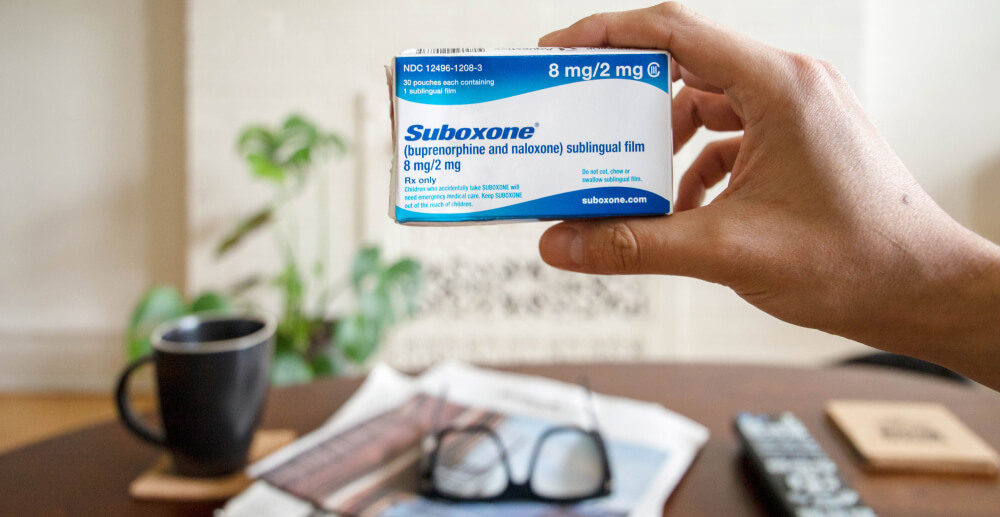For a long time, the idea has been to go to inpatient treatment to quit opiates. But is it really necessary for Suboxone treatment?
Suboxone is one of the few medications approved by the FDA to aide individuals who are trying to reduce or quit their use of opioids. A notable feature of Suboxone is that unlike methadone (another medication which is more strictly regulated), Suboxone can be prescribed by any doctor who receives qualification through the Substance Abuse and Mental Health Services Administration (SAMHSA). This makes office-based outpatient treatment using Suboxone more feasible, but Suboxone and other medications can also be used in inpatient settings. What’s the difference?
Comparing inpatient and outpatient treatment using Suboxone
Inpatient programs involve living within a facility for the duration of the treatment. These programs usually last between 28-90 days and are highly structured. The aim is usually not maintenance but detox: to get the patient to completely withdraw from, and abstain from, opioid use quickly [ASAM]. During an inpatient detox program, patients receive constant professional support and medical supervision, with no access to drugs. Medications such as Suboxone are used to ease the discomfort of the withdrawal process.
On the other hand, outpatient programs seek to integrate treatment in general medical care. In office-based Suboxone treatment, individuals are prescribed medication to take on their own and may have to visit the physician on a regular basis for drug testing and medication management services. In addition, the physician is required to refer the patient to additional psychosocial services such as counseling. Although outpatient treatment programs can also aim for rapid withdrawal (i.e. detox), oftentimes the goal is to maintain functioning with consistent Suboxone use for months or years, with the possibility of eventually tapering. This latter model of care is called Medication Assisted Treatment (MAT).
Is inpatient Suboxone treatment really better than outpatient?
Many believe that people suffering from addiction can only succeed through inpatient programs, which have the advantage of completely removing the individual from environments that are directly linked to their addictive behaviors. It should be noted that if detox is indeed the goal, inpatient detox programs have been found to be more effective (in terms of program completion) than equivalent outpatient programs – unsurprisingly, as detox can be highly uncomfortable even with the help of medications. However, office-based Medication Assisted Treatment is beneficial compared to (even inpatient) detox, for a couple reasons that we will discuss here: Effectiveness, safety, and access.
Research shows that detox programs are more likely to result in relapse than MAT. In one Irish study, 94% of the patients relapsed within 36 months of an inpatient residential program. Inpatient programs are more likely to be successful if they are intensive and followed up with long-term services. In contrast, reviews have shown that MAT reduces mortality, risk of HIV infection, criminal activity, and illicit opioid use, with the caveat that one must maintain medication use for extended periods of time. One paper recommends that detox only be considered for individuals who are exceptionally well functioning both physically and psychologically, with a strong social support network.
Both detox and MAT (as well as drug use) come with safety risks – for instance, methadone used for MAT can be “diverted” and then result in overdose (Suboxone is less risky in this regard). However, in the event of relapse, there is greater risk of overdose for detox than for MAT. This is because of the loss of tolerance that occurs once opioids have been completely withdrawn. In addition, ultra-rapid inpatient detox programs, in which withdrawal is completed over a period of hours to days sometimes under anaesthesia, have been associated with potentially life-threatening side effects. Furthermore, although not risk-free, MAT is the recommended treatment for pregnant mothers, because detox during pregnancy can result in miscarriage.
Finally, outpatient methods may simply be a more accessible model of treatment for many. Office-based programs are easier to access while maintaining commitments to family and work; they further allow the patient to avoid the stigma of substance use treatment and receive more tailored services. For these reasons, office-based treatment can be a generally more practical choice than inpatient detox.
Interested in outpatient MAT? Workit Health provides office-based treatment for opioid use disorder using Suboxone and a personalized online program.
More about inpatient MAT treatment
MAT programs are a clinical solution for recovery. The MAT process has been shown to lower opiate use, improve patient survival rates and increase overall retention in treatment.
Sources: Sullivan, L. E., & Fiellin, D. A. (2008). Office-based buprenorphine for patients with opioid dependence. Annals of internal medicine, 148(9), 662.Ducray, K., Darker, C., & Smyth, B. P. (2012). Situational and psycho-social factors associated with relapse following residential detoxification in a population of Irish opioid dependent patients. Irish Journal of Psychological Medicine, 29(2), 72-79.DuPont, R. L., McLellan, A. T., Carr, G., Gendel, M., & Skipper, G. E. (2009). How are addicted physicians treated? A national survey of physician health programs. Journal of Substance Abuse Treatment, 37(1), 1-7.Kleber, H. D. (2007). Pharmacologic treatments for opioid dependence: detoxification and maintenance options. Dialogues in clinical neuroscience, 9(4), 455.van den Brink, W., & Haasen, C. (2006). Evidence-based treatment of opioid-dependent patients. The Canadian Journal of Psychiatry, 51(10), 635-646.Strang, J., McCambridge, J., Best, D., Beswick, T., Bearn, J., Rees, S., & Gossop, M. (2003). Loss of tolerance and overdose mortality after inpatient opiate detoxification: follow up study. Bmj, 326(7396), 959-960.Luty, J., Nikolaou, V., & Bearn, J. (2003). Is opiate detoxification unsafe in pregnancy?. Journal of substance abuse treatment, 24(4), 363-367.Fiellin, D. A., & O’connor, P. G. (2002). Office-based treatment of opioid-dependent patients. New England Journal of Medicine, 347(11), 817-823.








